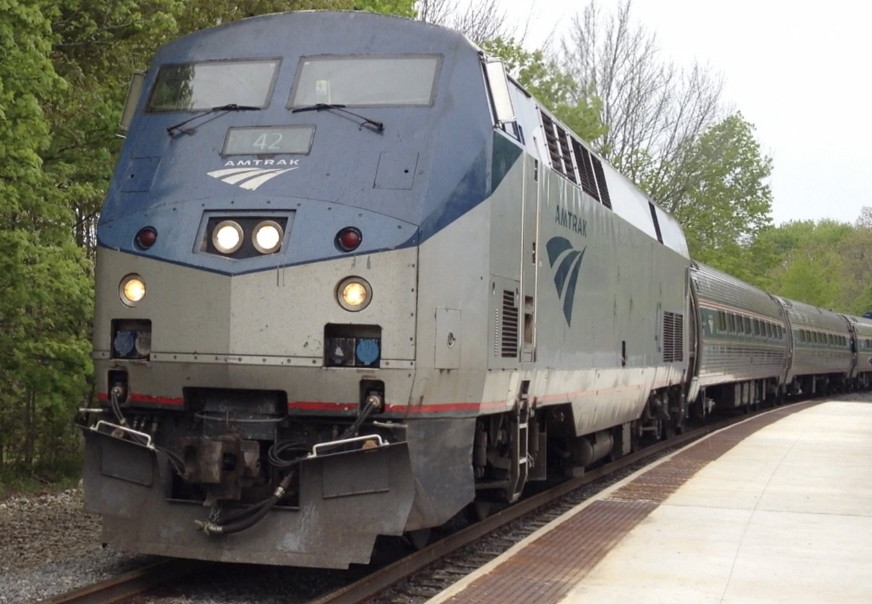A safety system that could have prevented the deadly Amtrak derailment in Philadelphia on Tuesday is not installed on Amtrak’s Downeaster service route because it doesn’t meet a traffic threshold.
The technology, called “positive train control,” is already in place on large sections of the Northeast Corridor, and work is underway in other sections to meet a December 2015 deadline set by Congress in 2008 in response to a head-on train collision that killed 25 people near Los Angeles.
But there are no plans to install the system in Maine and New Hampshire because the number of passenger trains on the line falls below the mandated minimum, according to Patricia Quinn, executive director of the Northern New England Passenger Rail Authority.
She said installing positive train control here would cost tens of millions of dollars.
“It’s extremely expensive,” she said.
The technology is designed to prevent the human errors behind about 40 percent of train accidents. It’s a complex system that combines wireless radio, global positioning system signals, track sensors and computers to give engineers and train dispatchers real-time information about train speed and location. The system will stop or slow a train if it’s not being operated properly.
The Downeaster trains are overseen by dispatchers who work in the Pan Am Railways control room in Billerica, Massachusetts. Pan Am operates freight trains on the Downeaster route between Brunswick and Plaistow, New Hampshire, on the Massachusetts border.
The 2008 law mandates that the system be installed on lines when they are used by both freight trains and passenger trains that make more than 12 trips daily.
The Downeaster currently operates 10 trips a day, which means it can offer two more daily drips before it would be required to install a positive train control system, Quinn said.
TRAIN CONTROL NOT TURNED ON
The Amtrak train involved in the crash in Philadelphia that killed eight people and injured about 200 was traveling at more than 100 mph, twice the speed limit, as it entered a sharp curve where it derailed, according to federal officials.
Positive train control was installed on the tracks where the accident occurred in Philadelphia, but it had not been turned on because further testing was needed, Amtrak President Joseph Boardman told The Associated Press on Thursday.
Amtrak has spent $110.7 million since 2008 to install the technology along much of its Northeast Corridor line, including stretches from Boston to New Haven, Connecticut, and sections in New Jersey and Maryland. But railroads have long said the 2015 deadline was unrealistic, and in March, the Senate Commerce, Science and Transportation Committee approved a bill that would give them until 2020 to install the technology, and another two years after that if they need more time.
The system likely would have prevented the accident by forcing the train to stay below the speed limit, National Transportation Safety Board member Robert Sumwalt told reporters on Wednesday.
The Massachusetts Bay Transit Authority, which owns the tracks the Downeaster operates on in Massachusetts, intends to install the system there to comply with the law, Quinn said. That’s because those tracks also carry MBTA commuter trains and exceed the 12-trip daily threshold in the law.
OTHER SAFETY MEASURES IN PLACE
Pan Am Railways and Amtrak have other safety measures in place on the line in Maine and New Hampshire, Quinn said. Engineers must press a button every 30 seconds to demonstrate they are alert, she said, and dispatchers can determine a train’s speed at any time by tracking its GPS signal. Amtrak managers also conduct random compliance checks to make sure engineers are following speed limits and other rules.
Moreover, the maximum speed for the Downeaster service is 79 mph and the Amtrak locomotives on the line are equipped with “over-speed technology” that prevents the trains from exceeding the speed limit by more than a few miles an hour, Quinn said.
There have been no personal injury accidents on the Downeaster service since it started 13 years ago, she said, except for incidents involving trespassers and motor vehicles that have ignored warning signals.
“Tragic things do happen,” Quinn said. “What happened is a tremendous mishap and a tragedy. But I have a lot of confidence in Amtrak’s and Pan Am’s safety protocols.”
Copy the Story Link
Send questions/comments to the editors.



Success. Please wait for the page to reload. If the page does not reload within 5 seconds, please refresh the page.
Enter your email and password to access comments.
Hi, to comment on stories you must . This profile is in addition to your subscription and website login.
Already have a commenting profile? .
Invalid username/password.
Please check your email to confirm and complete your registration.
Only subscribers are eligible to post comments. Please subscribe or login first for digital access. Here’s why.
Use the form below to reset your password. When you've submitted your account email, we will send an email with a reset code.